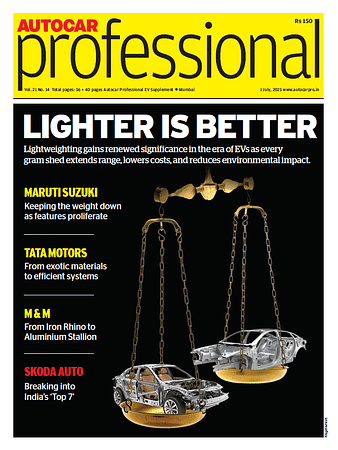TMF and WRI India release study that offers key insights into Metro usage patterns across India
A survey of 7,200 commuters, across Nagpur, Delhi, and Bengaluru, conducted as part of the Station Access and Mobility Program (STAMP) underlines solutions for improving last-mile connectivity to metros.
Toyota Mobility Foundation (TMF) and WRI India today launched a working paper that offers new insights into the way commuters access and utilise the metro, and its implications on last-mile services. The paper ‘Improving Metro Access in India: Evidence from Three Cities,’ was launched as part of ‘Connect Karo 2023’, a flagship knowledge event, organised by WRI India, that showcases research-based, solution-centric initiatives, geared towards sustainable development in India.
The paper presented key findings and recommendations based on extensive research across three metro cities – Nagpur, Delhi and Bengaluru. The study's findings reveal how poor access to metro stations impacts the use of the metro rail system in India. This shows that despite significant investment channeled into these systems, the lack of efficient last-mile connectivity has limited the metro’s full potential. The working paper, compiled as part of the TMF and WRI India Station Access and Mobility Program (STAMP), emphasises the urgent need for comprehensive and strategic planning to address this critical issue.
“The paper emphasises the need for robust data collection and analysis of commuter behavior for each station. This will enable cities to design appropriate services that respond better to the needs of commuters. Understanding last-mile commuter behavior is crucial for increasing ridership, as it has been identified as the biggest hindrance to utilising the metro,” said Madhav Pai, Chief Executive Officer, WRI India.
One of the key findings of the study is that Indian metro systems primarily attract the demographic of 18- to 35-year-olds, who use the metro to access workplaces and educational institutes. Additionally, the research underscores that metro users prefer walking or low-cost shared modes of transport for last-mile connectivity, with informal paratransit modes, such as shared autos, emerging as a particularly popular option. In all three survey cities, walking and shared modes constitute over 75% of the total last-mile mode-share. This indicates that low-cost, shared services and pedestrian infrastructure play a vital role in facilitating last-mile connectivity for metro users.
The study also reveals the time-sensitive nature of commute in India, especially for women, who are averse to waiting for last-mile modes. Consequently, the working paper emphasises the importance of high-frequency services when planning shared last-mile connectivity options. The research also indicates that existing fare structures empirically place a disadvantage on women as they tend to travel shorter distances, leading to higher fares. This highlights the need for fare structures that can accommodate gender-inclusive travel patterns. Another important finding is that users are willing to travel up to 20 minutes to access metro stations, including the time spent waiting for last-mile modes. This figure is consistent across cities and income groups, indicating that the “catchment region” of a metro station is determined by access time rather than by a fixed area.
The working paper proposes several recommendations to address the last-mile connectivity problem in the Indian metro rail systems. The findings suggest that a metro station’s effective catchment area can expand by operating faster last-mile modes, reducing wait times, and increasing average speeds, which can improve ridership.
“Not all cities are the same, and not all catchment areas around a metro station are the same. The types of commuters are different. Their travel patterns and mobility needs are different. Understanding this diversity is critical to understand the best way to seamlessly integrate first and last-mile mobility into the metro journey. Appropriately grasping these critical insights, the working paper serves as a call to action for policymakers, urban planners, and stakeholders in the transportation sector to adjust the key parameters that drive the metro journey, including journey information, booking services, hardware and software used for first and last mile, seamless payment methods, etc”, said Pras Ganesh, Executive Program Director, Asia Region, Toyota Mobility Foundation.
“By adopting the recommendations outlined in this paper, India can further unlock the full potential of its metro rail systems, by placing the commuter experience at its center, and contributing to sustainable urban development with the best integration of public and private transportation”, he further added.
RELATED ARTICLES
Next-Gen Tata Harrier and Safari Likely to Feature All-Wheel Drive System
The second-gen Harrier and new-gen Safari are codenamed Taurus and Leo, respectively.
Exclusive - Tata Motors Plots Comeback with New Nexon, Sierra, Avinya Brand and Compact Lifestyle SUV in Rs 35,000 Cr Overhaul
Tata targets ₹10–20 lakh sweet spot and premium electric space with multi-platform offensive across ICE, EV, and hybrid ...
Exclusive: Tata Motors Partners Desay SV to Accelerate Software-Defined Vehicle Strategy
Desay SV to support Tata Motors in building SDV platform for EVs and ICE vehicles across segments.





 By Autocar Professional Bureau
By Autocar Professional Bureau
 17 Jul 2023
17 Jul 2023
 4539 Views
4539 Views





 Autocar India
Autocar India




